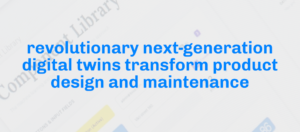::: nBlog :::
While travelling across the US, I’ve become a regular customer of famous (and successful) American (and British) chains such as Starbucks and Pret-a-Manger. I can only admire the accuracy of how these stores, their processes and looks are replicated across the country – and globally.
However, whenever I stand in a queue of only 5 people and wait for 15+ minutes, I can’t stop wondering about delivery and payment processing efficiencies. As noted, processes are well practiced but for some reason e.g. coffee making still takes a lot of manual labor, the credit card terminal lets me wait for 15s before allowing me to add the PIN code, and many times I get too hot latte even when I ask for kid’s temperature. Nothing too serious, but I can just see how all this could be done 75% faster, employing more people and making customers much happier. But, for now, it is apparently ‘good enough’. Why? Because most of these parameters are left unmeasured.
Having worked with numerous back offices of retailers, manufacturers and also with service companies, I’ve noticed that in the past, efficiency increases were most often gained by one-time projects, or waves, in which inefficiencies were analyzed ad-hoc by expensive consultants, and changes were then applied uniformly to the whole company. This might look good financially and give boost to the CEOs and COOs driving these projects. Who wouldn’t like to suddenly announce a 25% increase in productivity?
In my spime view, the wave approach is hopelessly outdated. Efficiency and customer experience must be analyzed continuously, and changes applied in real time based on local circumstances and a global pool of data. Each production component (e.g. coffee maker, milk cooler or credit card terminal) must be digitally manageable – making any efficiency improvement an intrinsic part of the process itself. This can only be done by securely connecting each compoment and creating a next generation digital twin – spime – for all relevant components and thus continuosly managing performance. No more cowboy heroes turning everything around, although leadership remains key.
I had a pleasure to see a prelude for all this in our Sunnyvale office, where a neighbour company just installed a fully robotic juice bar. After ordering a three-ingredient (they have some 50 available) juice with a mobile phone, the bar’s robotic hand picked a glass, mixed ingredients and gently handed the glass over to me. The lesson? All this took less than 30 seconds. And this is still beta software with debugging slowing things down. Yes, 95% of the bar is software, as the robot and the juice container are off-the-shelf industrial components.
Spimed robots will not steal human jobs any more than factories did 100 years ago. Jobs will just be more meaningful, with more human interaction and opportunities to innovate by infusing the practical knowledge into the process at any level. It’s all about managing the inertia and resistance to change.
//Pasi




3 replies on “Spime in the Machine”
Hello basen.net admin, Your posts are always well-supported by research and data.
To the basen.net webmaster, You always provide useful information.
Dear basen.net webmaster, Your posts are always well-received and appreciated.